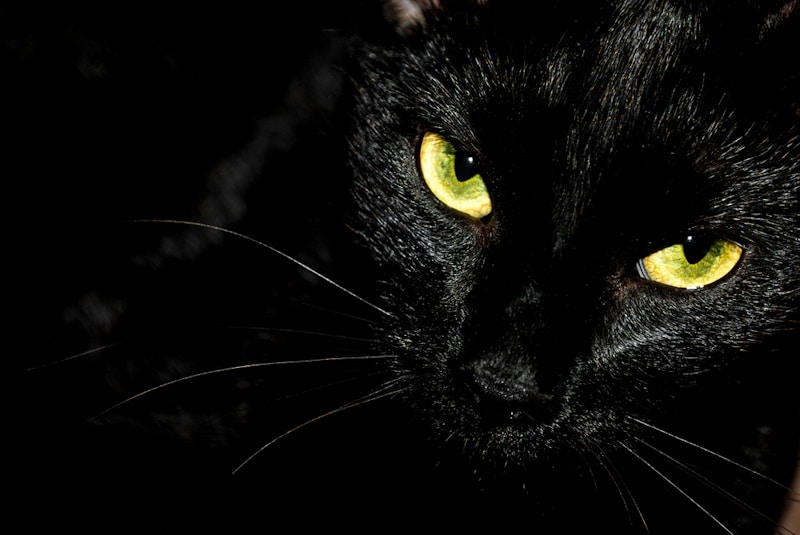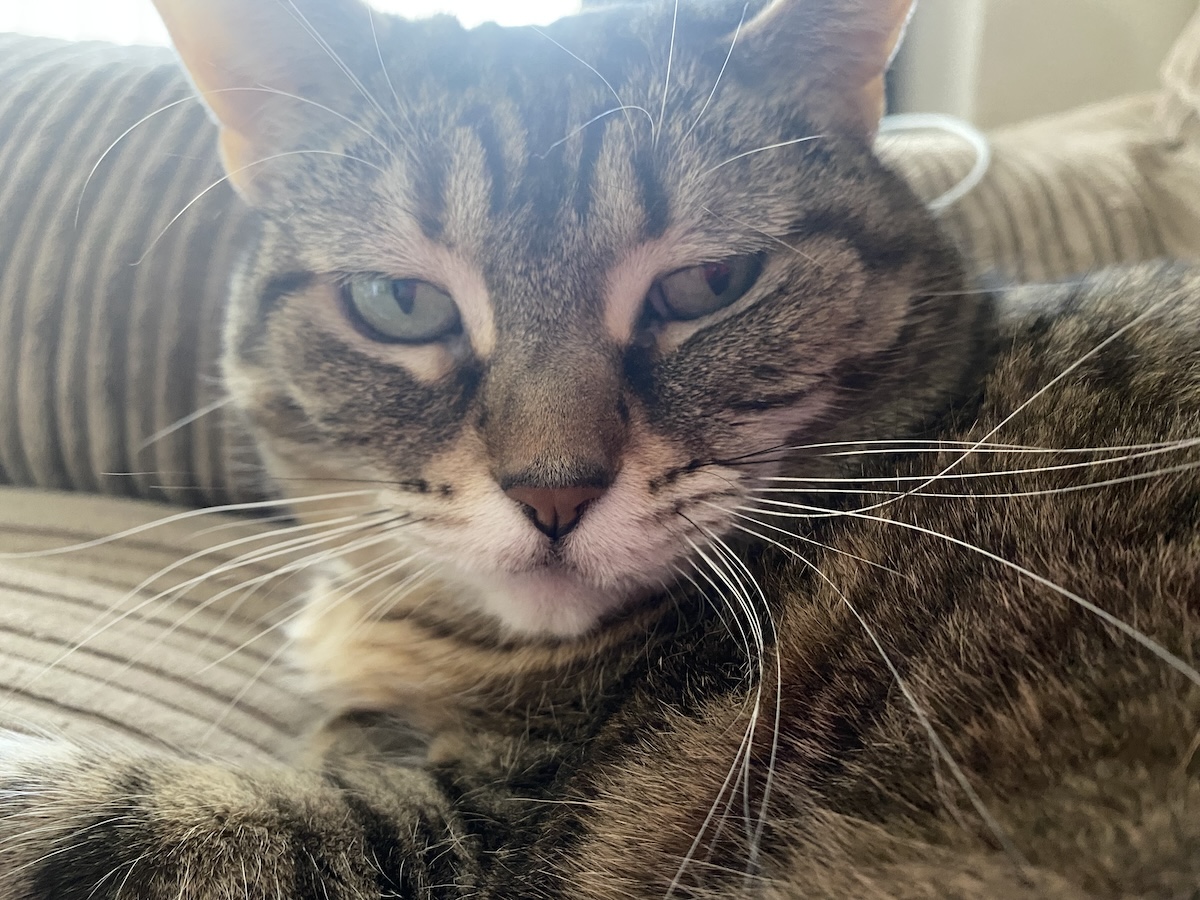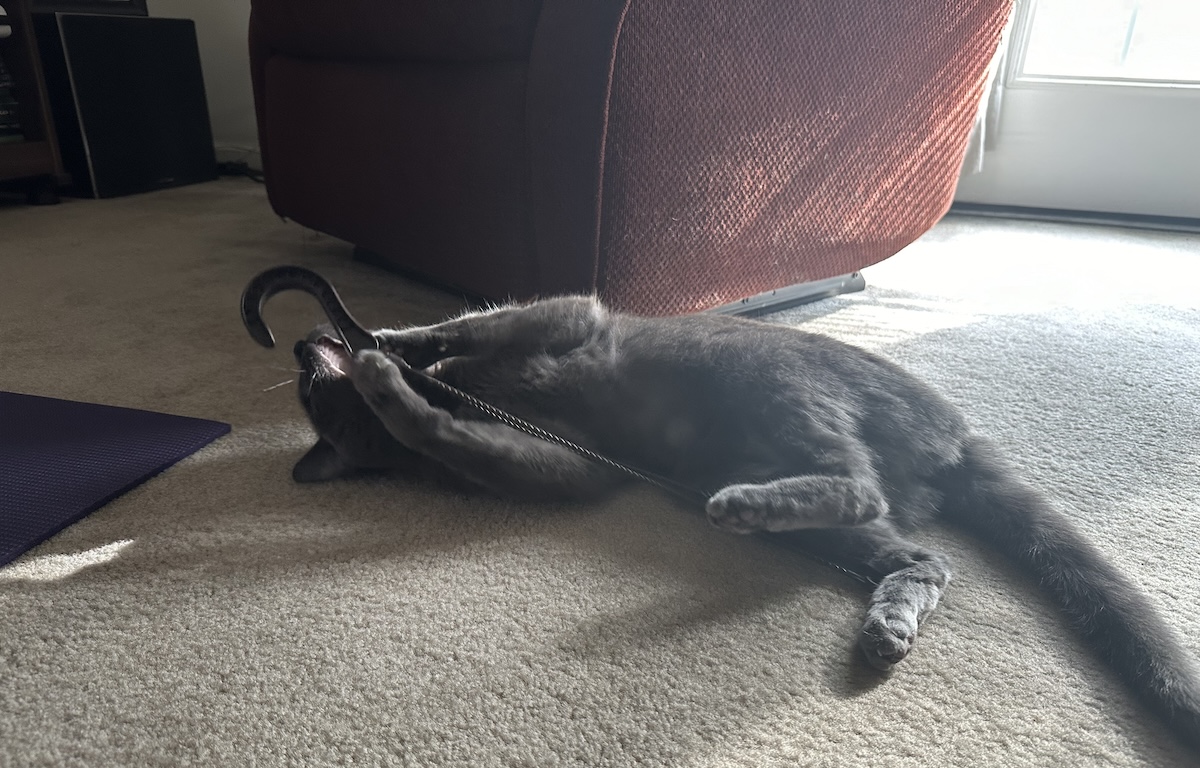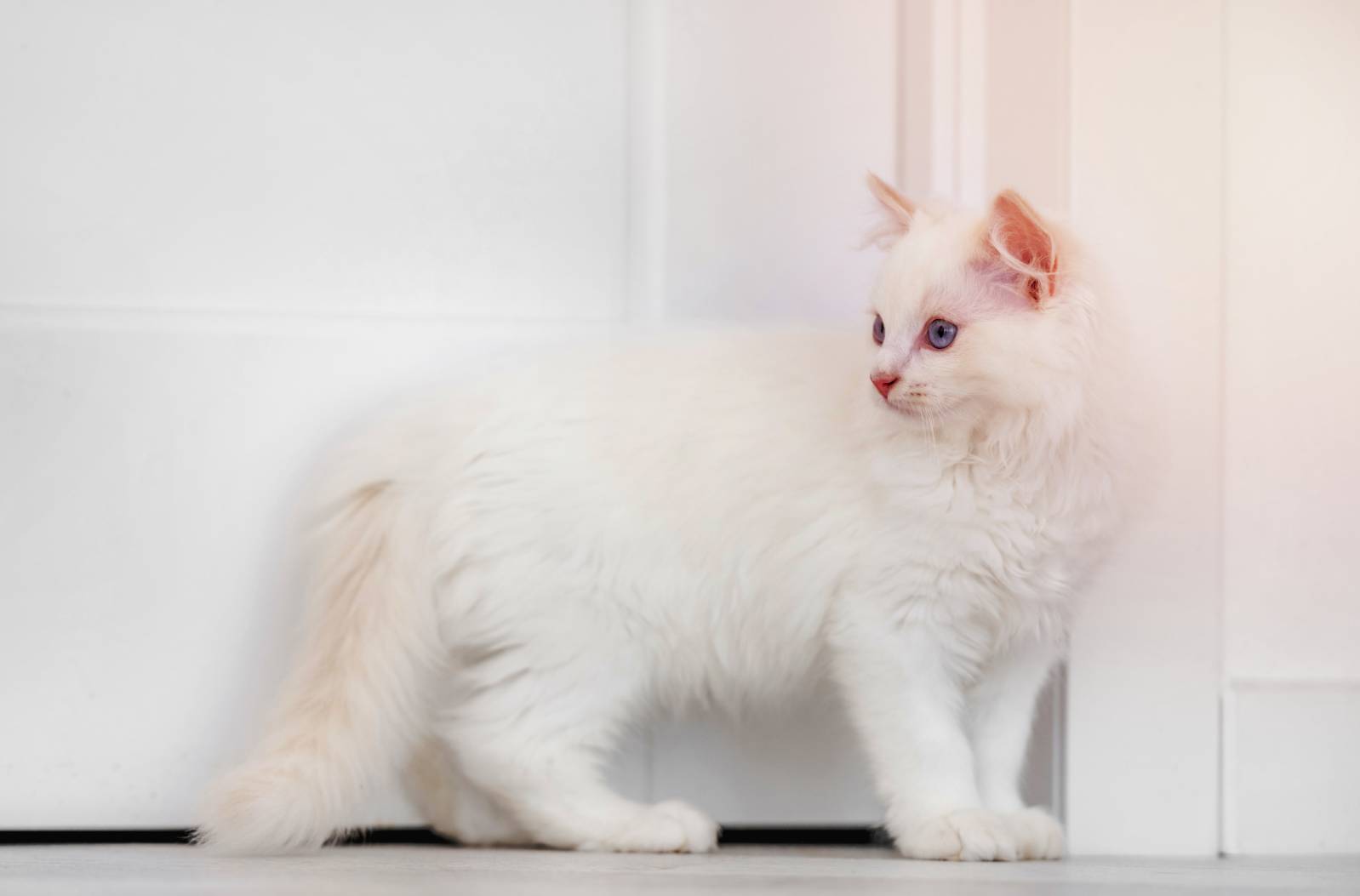The term “demon cat” can refer to a few different myths that have occurred at different times. Generally, these cats are considered to be ghosts or other supernatural beings. The most famous examples of these supernatural cats are the U.S. Capitol ghost cats and various cats in Japanese mythology.
Of course, whether you believe these demon cats are real is completely based on your beliefs and feelings. Science cannot prove the existence of these supernatural beings, so we can’t say whether they exist or not. Still, here are a few interesting myths to learn about and their history.
The U.S. Capitol Demon Cat
By far, the most famous modern known tale of the demon cat is the story of the U.S. Capitol’s demon cat. This myth is thought to have originated in the mid-1800s. During that time, mice and rats were still a serious problem in many people’s homes, and cats were still the best way to deal with these vermin. Therefore, several cats were brought into the U.S. Capitol building to help deal with the rodents.
According to the legend, the ghost of one of these cats (or several cat ghosts, depending on who you talk to) still lives in the building. Sometimes, they are normal-sized, but other times, they appear to be the size of an elephant. The color, shape, and other details also vary from report to report. These cat ghosts are said to haunt the Capitol’s basement and stalk politicians.
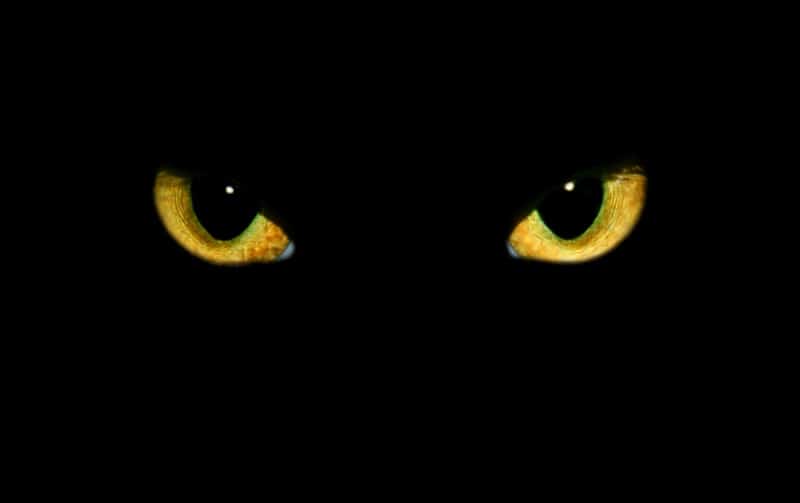
Some even say that these cats appear before a presidential election or a political calamity. Most consider them to be signs of bad luck or a warning that something is about to happen.
The origins of this myth likely come from mundane sightings of real cats in the Capitol’s basement, where they were likely hunting for rats. However, many people claim to have seen these cats recently, though the Capitol hasn’t kept cats for some years.
Demon Cats in Japanese Mythology
There are also several tales in Japanese mythology of the “bakeneko,” which are cats with supernatural powers. Some of these are benevolent and help the hero of the tale, while others are associated with misfortune. Whether or not the cat causes the misfortune or simply warns about it depends on the myth and who’s telling it.
Many tales also show otherworldly cats leading humans to their deaths and then possessing their bodies. They’re a bit like the Western demons in this sense but in the form of a cat.
They’ll also generally be associated with bad luck—in the vast majority of cases, seeing one of these cats is not a good thing.
Other Demon Cat Myths
There are many stories about mythical cats throughout the world, though these may be less known. For instance, the Chinese have similar myths about supernatural cats bringing about bad events or even harming people.
The Scottish also have stories about faerie cats, which are almost exclusively malevolent beings. These demon cats were often large and black with a single white spot on their chest. Most legends suggest that these cats were actually faeries. However, other tales suggest that these cats were actually witches who could turn into cats to terrorize the locals.
It is thought that these cats were inspired by the Scottish Wildcat, which is a real breed. However, we’ll never really know if these cats are supernatural or misunderstood wild cats.
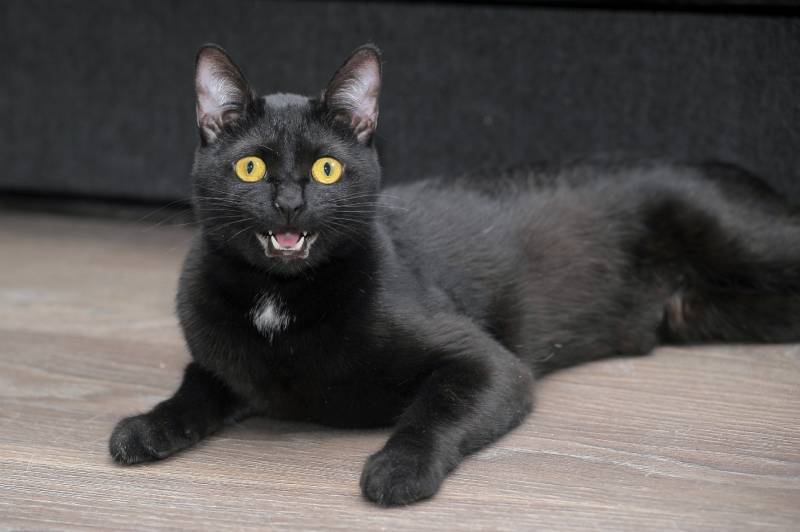
What Inspired the Demon Cat Myths?
Myths about demon cats vary from culture to culture. However, these cats are rarely positive forces. In their most innocent form, they may only warn about impending dangers. They rarely announce or bring about good events.
In most cultures, demon cats seem to be bringers of fear and anxiety. Cats may be a particularly good symbol for this due to their somewhat nocturnal sleeping schedule, familiarity with many cultures, and uncontrollable nature.
Their nocturnal behavior has given cats connections with death and the underworld. They’re often seen as rather secretive, which may have given rise to the myth that they travel to the underworld. (Try saying the same thing about the family dog that’s always following someone around.)
Cats are also very independent. If not socialized from a young age, cats will even turn feral, making them wild forever. Cats are not as integrated into human society as dogs are, but they’re easily just as common as dogs.
Are Mythological Cats Always Bad?
Many cultures did link cats directly to bad events and malice. For instance, in many Japanese tales, demon cats were born from mistreated pets and represented cruelty. They often directly cause bad things to happen.
That said, not all cultures represent cats negatively. Egyptians considered cats a symbol of the goddess Bastet, who was benevolent. They often mummified cats to ensure that they got the same afterlife that humans did.
Celtic culture also saw cats as at least somewhat positive. The goddess Morrigan was said to be able to transform into a cat. While Morrigan was not always a nice goddess, she wasn’t considered evil either. She represented the necessity of death, but she wasn’t cruel.
All cultures have their own thoughts about cats, and many even have competing narratives about supernatural felines.
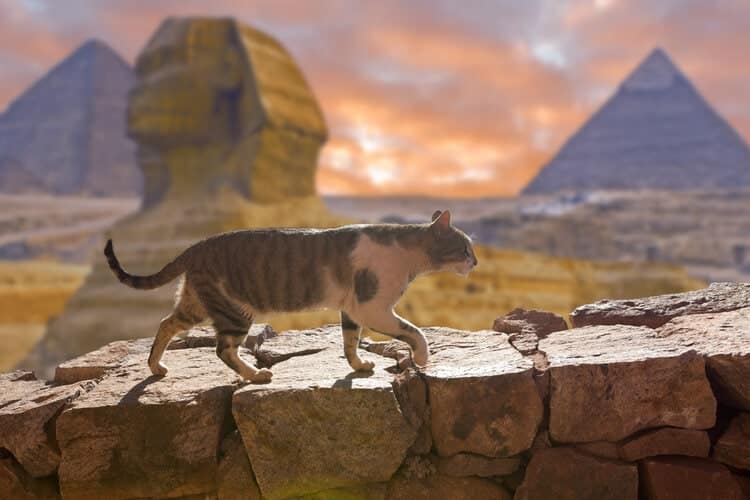
What Do Demon Cats Represent?
Demon cats can represent several things in a tale, depending on who is telling it and the culture it is in. Often, demon cats represent something unseen in the human world. Many demon cats are shapeshifters or seen in low-light settings (like the basement of the U.S. Capitol).
Part of the fear surrounding demon cats comes from the unknowns surrounding the myth. We don’t know if demon cats are good or bad or where they come from. Their intentions are rarely clear in the tales.
In some cultures, demon cats directly or indirectly punish the people society considers “immoral.” For instance, in Scottish tales, demon cats are often luring their victims with bargains of power. It’s the greedy people in the tales who fall for the cat’s empty promises. In Japan, demon cats were often connected to mistreated pets.
Therefore, demon cats may do bad things, but they often do them to bad people. They may be seen as the necessary “moral enforcers” of a culture, and their tales may have made some members of society think twice about their actions.

Final Thoughts
Demon cats appear in a vast number of cultures across the world. You’ll find tales of supernatural cats in places ranging from the U.S. Capital and Scotland to Japan. Surprisingly, many of these demon cats are portrayed in similar ways. They often cause bad things to happen or at least warn that bad things are going to happen.
Whether or not you believe in these cats is completely up to you. Either way, if you notice an overly large black cat in a basement, we wouldn’t recommend following it!
Featured Image Credit: Gonzalo Aragon, Shutterstock

